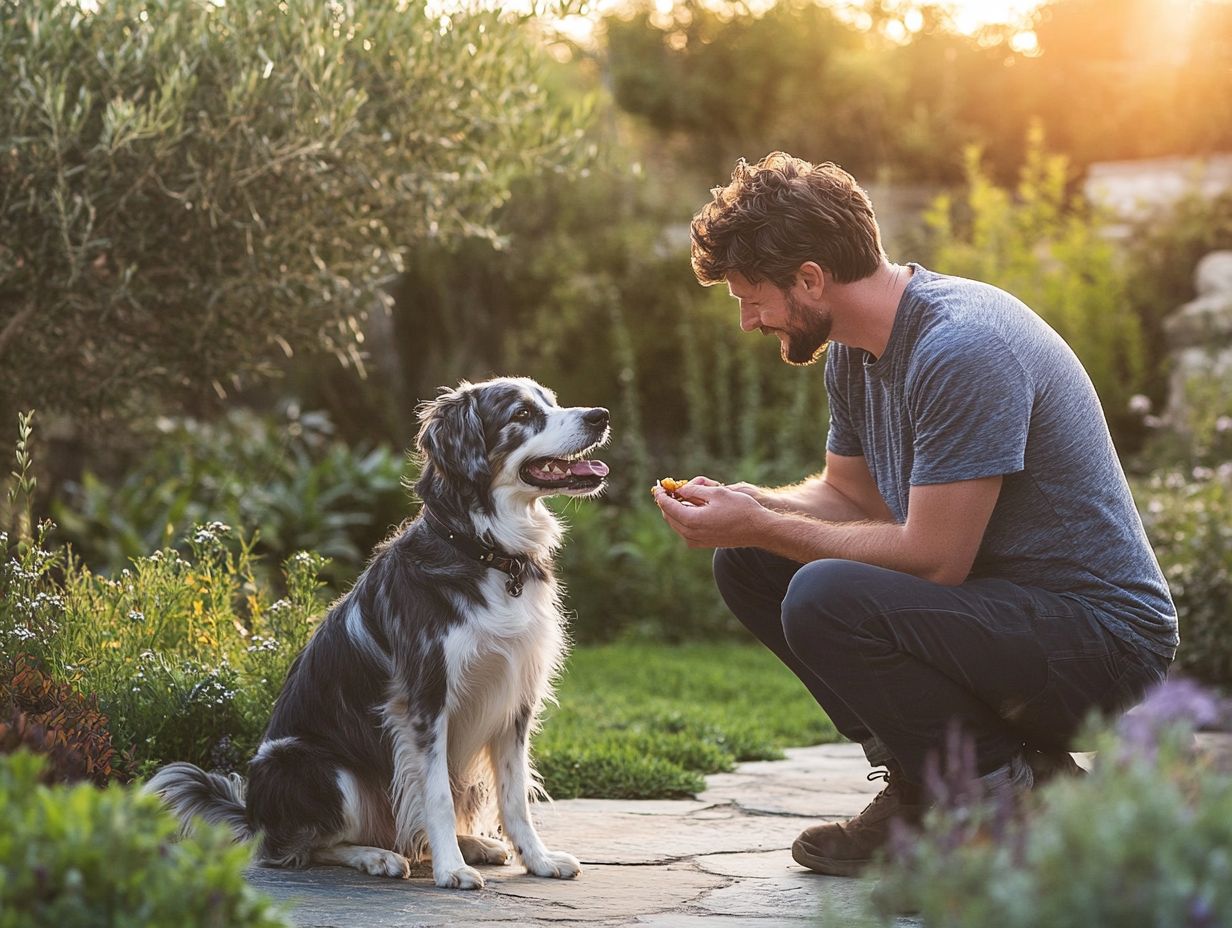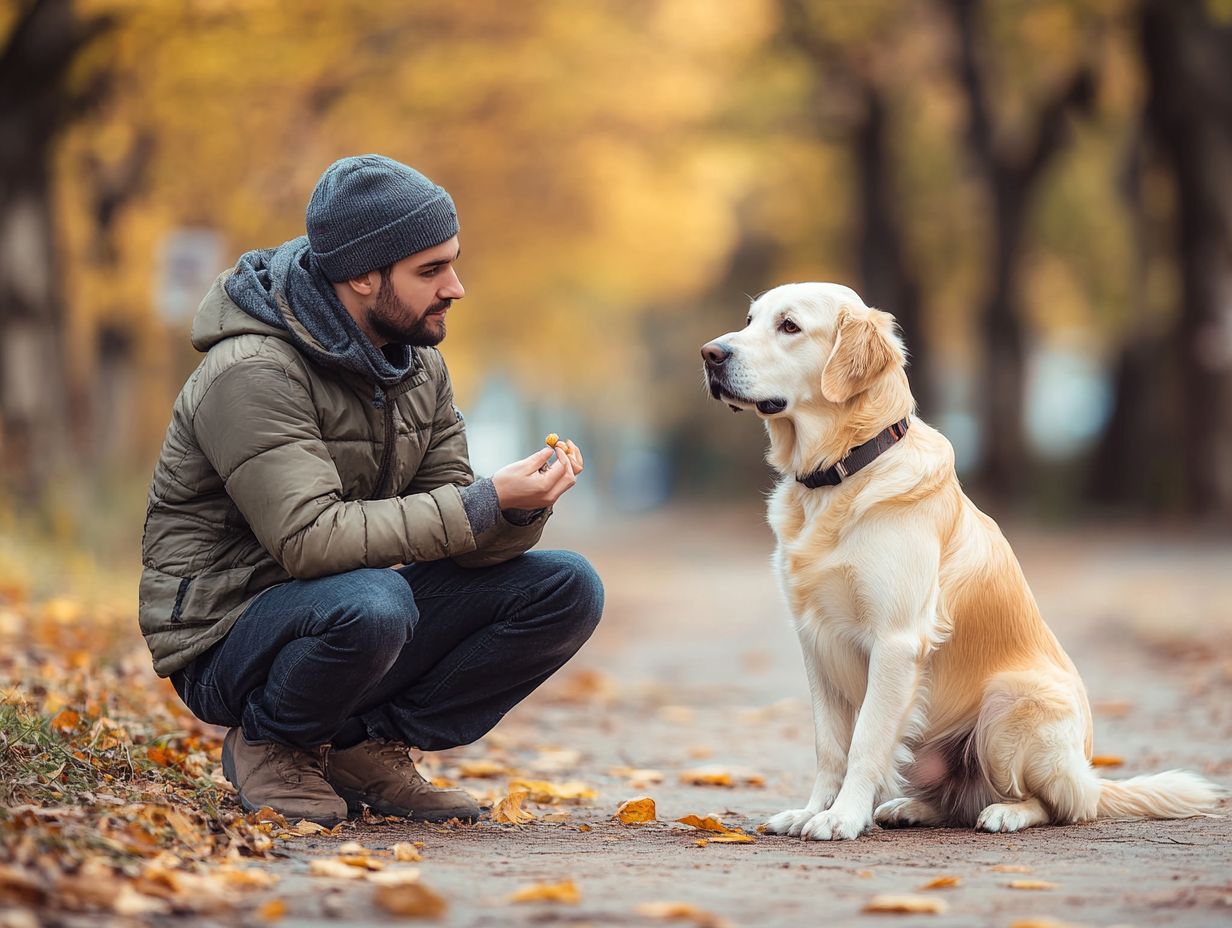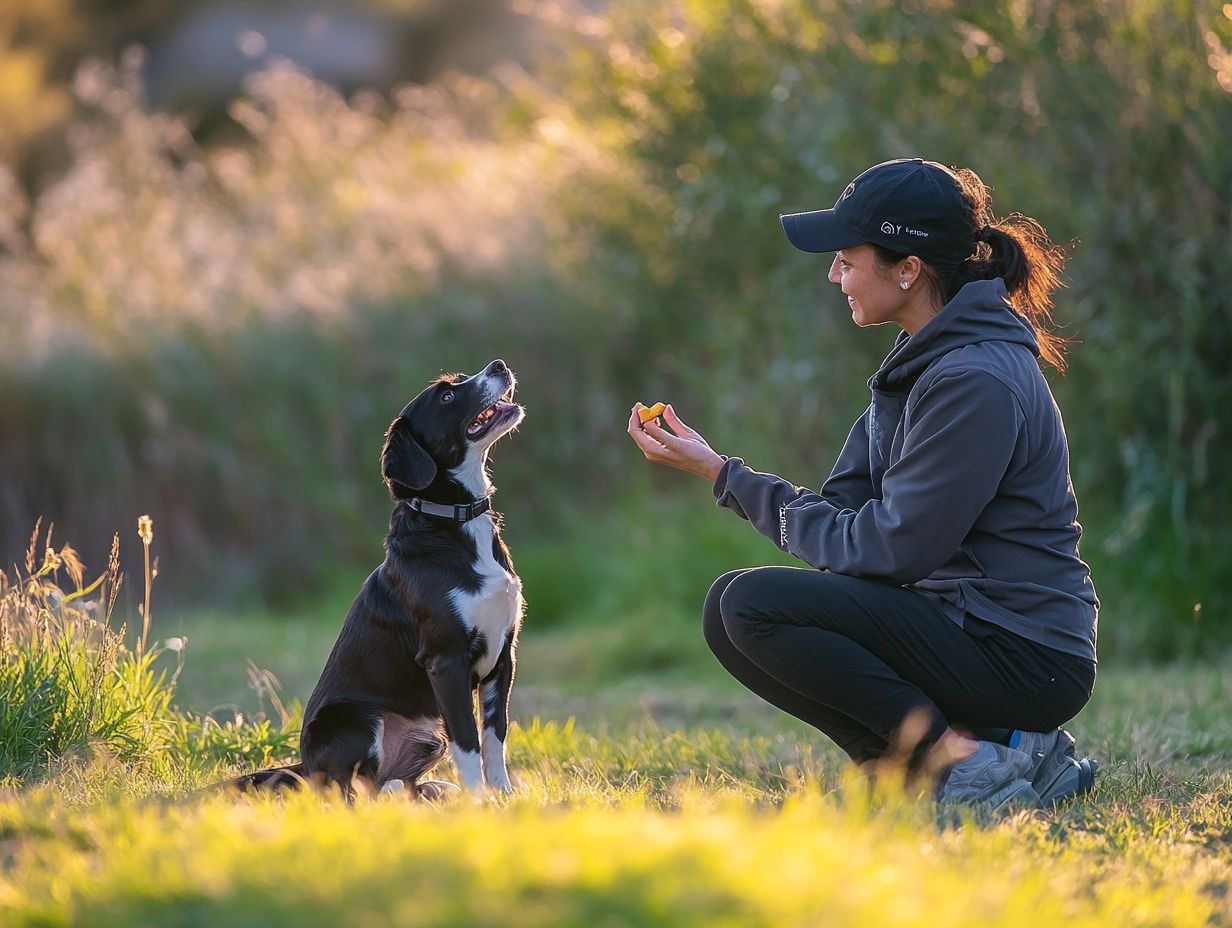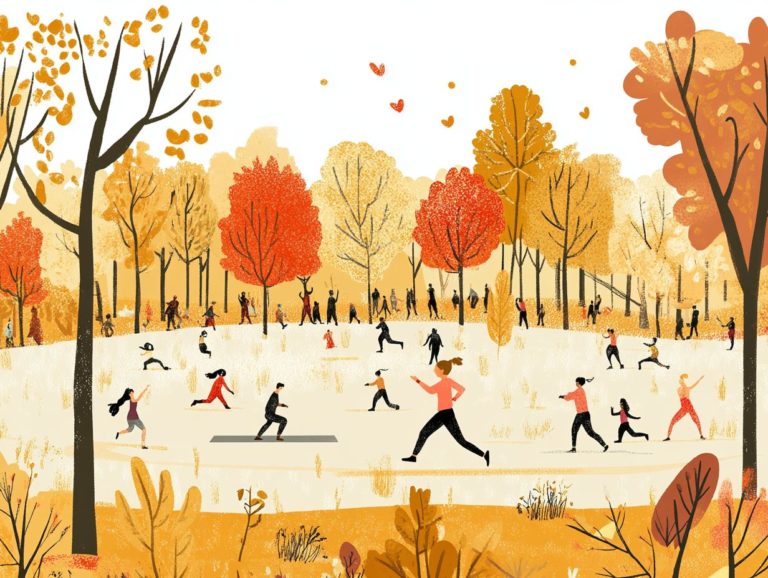The Role of Trust in Training Anxious Pets
Training a pet with anxiety can indeed be a challenging journey, but cultivating trust is essential for achieving success.
Recognizing how anxiety impacts your furry companion is the first step toward creating a safe and nurturing environment. By establishing consistent routines and employing effective training techniques like positive reinforcement, you can help your pet feel secure and confident.
Whether you’re encountering setbacks or simply looking to deepen your bond, this article provides valuable insights and practical tips designed to foster trust and enhance your pet’s overall well-being.
Contents
- Key Takeaways:
- The Importance of Trust in Training Anxious Pets
- Building Trust with Your Pet
- Training Techniques for Anxious Pets
- Handling Setbacks and Challenges
- Maintaining Trust and Building a Strong Bond
- Frequently Asked Questions
- What is the role of trust in training anxious pets?
- How does trust affect an anxious pet during training?
- Can trust be built between an anxious pet and their owner?
- Is trust the only important factor in training anxious pets?
- Why is it important to establish trust before starting training with an anxious pet?
- What are some ways to build trust with an anxious pet?
Key Takeaways:

- Anxiety can significantly impact a pet’s behavior and ability to learn, making trust a crucial element in training.
- Creating a safe and comfortable environment along with a routine can help build trust and alleviate anxiety in pets.
- Positive reinforcement and changing how your pet reacts to certain triggers are effective techniques for training anxious pets. Setbacks and challenges should be met with patience, and it may be helpful to seek professional help.
The Importance of Trust in Training Anxious Pets
Trust is a cornerstone in establishing a robust partnership with your anxious pets, particularly dogs. It forms the bedrock for effective training and significantly improves their overall behavior, as outlined in understanding fears in pets.
By fostering trust, you cultivate an empathetic environment where your pets feel safe and understood, which is essential when tackling their anxiety. This trusting relationship enhances communication between you and your pet, enabling training techniques to manage aggression in anxious pets that truly nurture their confidence and comfort.
Understanding the Impact of Anxiety on Pets
Anxiety in pets, especially in dogs, can profoundly influence their behavior, resulting in fear-driven reactions and stress. It’s crucial for you to understand how this anxiety manifests, as it can impede their ability to trust and connect with you.
When confronted with unfamiliar situations, like loud noises or new environments, your pet may display distress signals such as hiding, excessive barking, or even aggression. These reactions often arise from a deeply rooted fear of the unknown, creating a cycle of anxious behavior.
By recognizing these signs, you can cultivate an environment where your pet feels safe and secure. Understanding the specific fears that each pet harbors enables you to provide tailored support, ultimately strengthening your bond and enhancing trust.
Engaging in consistent training and socialization efforts can significantly reduce anxiety. This paves the way for healthier interactions between you and your beloved companion.
Building Trust with Your Pet
Building trust with your pet, particularly with a dog, is a gradual journey that demands patience and dedication. This process serves as the cornerstone of a loving relationship.
By nurturing open communication and offering the necessary support, you’ll enable your pet to develop confidence and alleviate anxiety. Understanding the needs of anxious pets is essential, as this trust paves the way for improved interactions, ensuring your pet feels secure and valued within your partnership.
Creating a Safe and Comfortable Environment
Imagine your dog feeling at ease in a cozy, welcoming space that s what you re aiming for! Creating a safe and comfortable environment is essential for alleviating anxiety and fostering trust.
This means providing a designated area where your pet can retreat to feel secure, which significantly promotes their emotional well-being. Ensuring that this space is free from loud noises and sudden disruptions is crucial for minimizing stress.
By incorporating soft bedding, familiar toys, and calming scents, you can greatly enhance this sanctuary for your furry friend. Establishing a consistent routine is also beneficial; predictability helps further reduce anxiety levels.
Utilizing training methods focused on positive reinforcement strengthens the bond of trust, encouraging your dog to feel safe and secure in their surroundings. Your goal is to create an atmosphere where they can thrive emotionally and physically, reinforcing that they are in a supportive home.
Start today and watch your bond with your pet strengthen!
Establishing a Routine

Establishing a routine for your dog is essential for building trust and understanding. It provides a sense of structure that can significantly reduce anxiety. A predictable schedule helps your pet feel more secure and fosters confidence in their environment.
When dogs know what to expect throughout their day, they are less likely to experience stress or confusion, which can lead to behavioral issues. Regularly scheduled feeding, walks, and playtime instill a sense of normalcy that enhances their overall well-being.
These routines aid in quicker learning, as your pet begins to associate specific cues with actions and rewards. This consistency strengthens the bond between you and your dog, creating a more harmonious household.
Structured routines are vital for shaping a well-adjusted, happy canine companion.
Training Techniques for Anxious Pets
Training techniques specifically designed for anxious pets, especially dogs, are key strategies for modifying behavior and nurturing a trusting bond between you and your furry companion. For those seeking more tailored approaches, exploring training techniques specifically for anxious breeds can be incredibly beneficial.
Using methods like positive reinforcement can enrich the learning experience, ensuring that your dog feels both supported and encouraged throughout the training journey.
Positive Reinforcement
Positive reinforcement is a powerful training technique that rewards your dog’s desired behaviors. This fosters improved communication and a deeper understanding between you and your pet.
This approach sharpens your dog’s skills while building their confidence and trust in you. By consistently acknowledging and rewarding good behavior like sitting on command or not jumping on visitors you can reshape your pet’s actions and cultivate a positive learning environment.
For example, when your dog successfully performs a trick and is met with treats or enthusiastic praise, the connection between their actions and the reward reinforces the desired behavior.
The advantages of this method extend beyond training; it nurtures a stronger bond between you and your canine companion, helps your dog feel secure, and significantly reduces anxiety. This leads to a happier and more well-adjusted pet.
Desensitization and Counterconditioning
Desensitization and counterconditioning are vital techniques for training dogs with anxiety. These strategies allow them to gradually acclimate to things that make your dog anxious in a controlled environment.
These approaches focus on transforming your dog’s response to stressors, ultimately enhancing their overall behavior and emotional resilience. For instance, if your dog gets anxious during thunderstorms, desensitization means slowly exposing them to the sound at a lower volume while ensuring they remain calm.
Counterconditioning involves pairing that sound with something positive, like treats or playtime, helping your dog associate the noise with pleasant experiences.
By consistently implementing these strategies, you can create a caring environment where your dog feels safer and more confident, leading to a noticeable reduction in anxious behaviors.
Handling Setbacks and Challenges
Navigating setbacks and challenges in training anxious pets, especially dogs, is crucial. It requires both patience and persistence, and understanding leash training for anxious dogs can be particularly helpful.
Recognizing that progress may not always follow a straight path allows you to maintain a nurturing environment. This approach encourages growth and cultivates a deeper bond and trust between you and your furry companion.
Patience and Persistence

Patience and persistence are essential attributes for training anxious dogs. These qualities can lead to significant behavioral improvements over time.
By establishing trust through consistent efforts, you create a loving and supportive environment that fosters growth. Incorporating strategies like positive reinforcement and helping your dog slowly get used to things that scare them allows you to craft a safe space for your dog to express itself.
Using treats and praise effectively strengthens the bond between you, reassuring your pet and promoting its confidence. Engaging in regular, short training sessions helps maintain focus and minimize stress, facilitating better learning and retention.
Understanding canine body language is important for gauging your anxious dog s comfort levels, enabling you to tailor your approach accordingly. Ultimately, these methods pave the way for a harmonious relationship built on mutual respect and understanding.
Seeking Professional Help
Seeking professional help is essential for addressing behavioral issues in anxious dogs, especially when your training efforts don t seem to be making a dent. Certified trainers and behaviorists are equipped with specialized techniques that cater to your pet’s unique needs, enabling them on their journey to confidence and stability.
By collaborating with these experts, you gain access to invaluable insights into effective behavior modification strategies and anxiety management practices. Whether through personalized training sessions, group classes, or remote consultations, these professionals offer support that can significantly reduce stress for both you and your furry friend.
Their extensive experience enables them to pinpoint the underlying triggers contributing to your dog’s anxiety, ensuring that interventions are not only effective but also compassionate. This holistic approach nurtures a healthier, more harmonious relationship between your dog and your family.
Maintaining Trust and Building a Strong Bond
Maintaining trust and cultivating a strong bond with your dog is a continuous journey that demands consistent communication and shared experiences.
Regular interaction boosts your bond and makes training even more fun! By nurturing this relationship, you can help your anxious dog feel secure and supported, fostering a deep connection that endures even in challenging times.
Consistency and Communication
Consistency and communication are vital in building a trusting relationship with your dog, providing the clarity and assurance needed in your interactions. This approach enhances the learning process and deepens the emotional connection you share with your pet.
Creating a routine that weaves in regular training sessions, playtime, and moments of affection can greatly enrich this bond. By employing clear and consistent cues, your dog will grasp what is expected of them, reducing the chances of misunderstandings.
Taking the time to actively listen to your dog s signals and adjusting your approach based on their responses cultivates a stronger connection. This mutual understanding helps your pet feel secure and confident in their environment, making the training journey enjoyable and effective for both of you.
What strategies have you found most effective in building trust with your dog?
The Power of Love and Affection
The power of love and affection in building a strong bond with your dog is remarkable. These emotions are vital for establishing trust and security.
When you show love through gentle petting and playful interactions, you create a safe space. Your dog responds, showcasing loyalty and joy that deepens your connection!
This mutual affection enhances your canine’s well-being. It also enriches your life, creating an unbreakable bond.
As your connection grows, shared experiences can help reduce stress and anxiety for both of you. This fosters a happier home environment.
Nurturing this bond highlights how love can change your life with your cherished companion.
Frequently Asked Questions

What is the role of trust in training anxious pets?
Trust is crucial for training anxious pets. It creates a strong bond between the pet and their owner, making learning easier. Understanding the science behind training anxious pets can also enhance this process.
How does trust affect an anxious pet during training?
Trust helps pets feel safe and secure, which reduces their anxiety and allows them to focus on learning. Implementing tips for training anxious pets at home can enhance this process.
Can trust be built between an anxious pet and their owner?
Yes! Trust can be built through positive training methods, patience, and understanding play therapy for anxious pets.
Is trust the only important factor in training anxious pets?
No, it’s not the only factor. Consistency, positive reinforcement, and understanding behavior are also important.
Why is it important to establish trust before starting training with an anxious pet?
Establishing trust helps your pet feel safe. This makes them more receptive to training.
What are some ways to build trust with an anxious pet?
You can build trust by using positive reinforcement and being patient. Additionally, consider using music to calm anxious pets during training to create a safe and comfortable environment for your pet.






